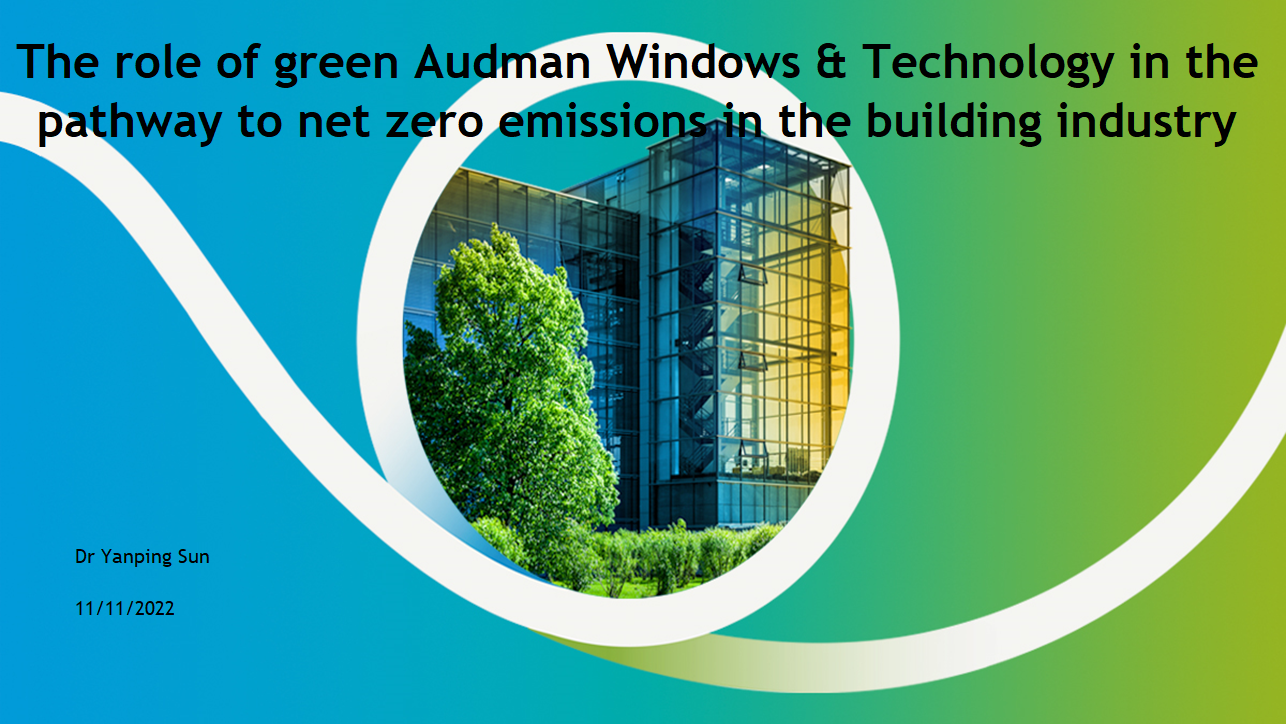Why building industry needs net-zero emissions?
- Accelerating physical consequences of a changing climate are becoming more severe as communities face very bad storms, floods, fires, extreme heat, and other risks.
- Australian government has committed to reducing its emissions to 43% below 2005 levels by 2030 and reach to net-zero emissions by 2050.
- The building industry is responsible for 40% of global GHG emissions, making it crucial to achieving the net-zero emission target:
- approximately 70% are produced by building operations
- the remaining 30% comes from the building construction
- central to GHG mitigation efforts to achieve the net-zero emissions targets
- The physical and climate transition risks can affect both individual buildings and total building markets. A carbon-intensive building obviously faces regulatory, tenancy, investor, and other risks
- Create a significant risk of mispricing building markets and asset classes but also bring opportunities to generate new revenue related to the climate transition
- Urgent need to take action to thrive throughout the climate transition
Risks and opportunities
The building industry faces challenges with the costs required to reach net-zero emissions, including
- rising building, and energy efficiency standards and renewable energy mandates
- high carbon prices can translate into higher energy costs and increase operating expenses for the building industry
- property owners may need to make investments to meet new energy efficiency standards to avoid restrictions on renting or sales. These additional costs may make out-of-date, high-emitting assets less desirable
But financial benefits are also available such as
- Significant reductions in emissions can be achieved with positive economics through technologies that already exist such as
- reduce operating costs as the building operates more efficiently
- Introduce green buildings and attract more tenants
- decarbonized capital more attract investors
- Attract the trillions of dollars of capital that have been committed to net zero with a lower interest rate
Fail to take sufficient measures to become net-zero, the building industry risks non-compliance with fast-evolving government legislation
Decarbonization strategy
The Australian government has developed several relevant systems to facilitate emissions reduction in the building industry, including
- National Australian Built Environment Rating System (NABERS) allows commercial office users to compare energy efficiency, water usage, and waste management services when looking to buy or lease building space
- National Construction Code and Building Sustainability Index (BASIX) provides a pathway to deliver cost-effective, low emissions outcomes for residential, commercial, and public buildings
- Achieve net-zero embodied carbon in building materials, through mechanisms such as the National Construction Code and the Green Star Rating System such as Green Star Design & As Built, Interior and Performance
- Management: Aims to encourage and reward the adoption of practices and processes that support best practice sustainability outcomes throughout the different phases of a project’s design, construction, and ongoing operation.
- Indoor Environment Quality (IEQ): Aims to encourage and reward initiatives that enhance the comfort and well-being of occupants. The credits within this category address issues such as air quality, thermal comfort, and acoustic comfort.
- Energy: Aims to reward projects that are designed and constructed to reduce overall greenhouse emissions from operations by addressing energy demand reduction, use efficiency, and generation from alternative sources.
- Transport: Aims to reward projects that facilitate a reduction of the dependency on private car use as an important means of reducing overall greenhouse gas emissions, as well as to encourage the provision of alternative forms of transportation.
- Water: Aims to encourage and reward initiatives that reduce potable water consumption through measures such as the incorporation of water-efficient fixtures and building systems and water reuse.
- Materials: Aim to address the consumption of resources for the project, by encouraging the selection of low-emissions materials.
- Land use & ecology: Aims to reward projects that minimize harm and enhance the quality of local ecologies.
- Emissions: Aims to assess the environmental impacts of ‘point source’ pollution generated by projects and reduce their effects on the atmosphere, watercourse, and native animals.
Innovation: Aims to recognize the implementation of innovative practices, processes, and strategies that promote sustainability in the built
Actions
The building industry needs to act quickly but carefully to decrease greenhouse gas emissions to make an impact with building investments to prevent the impacts of climate change. Some actions are illustrated in the following, but not limited to these
- Adopt new technology or retrofits to boost energy efficiency and reduce energy bills such as windows, ventilation, air conditioning systems (HVAC), lighting, and water use.
- Increase uptake of renewable energy and introduce green buildings
- Work with suppliers to reduce GHG emissions in the supply chain
- Invest in ‘green’ technologies and transportation infrastructure
- ……
- ……







